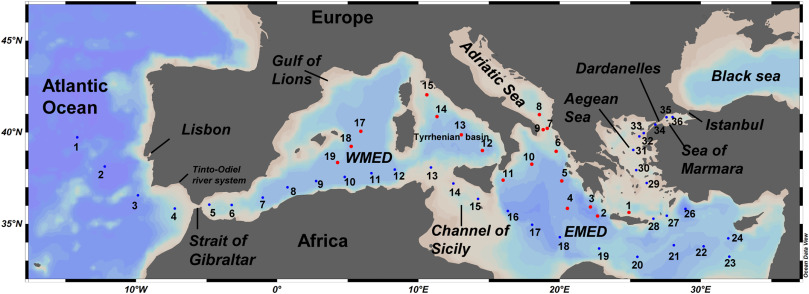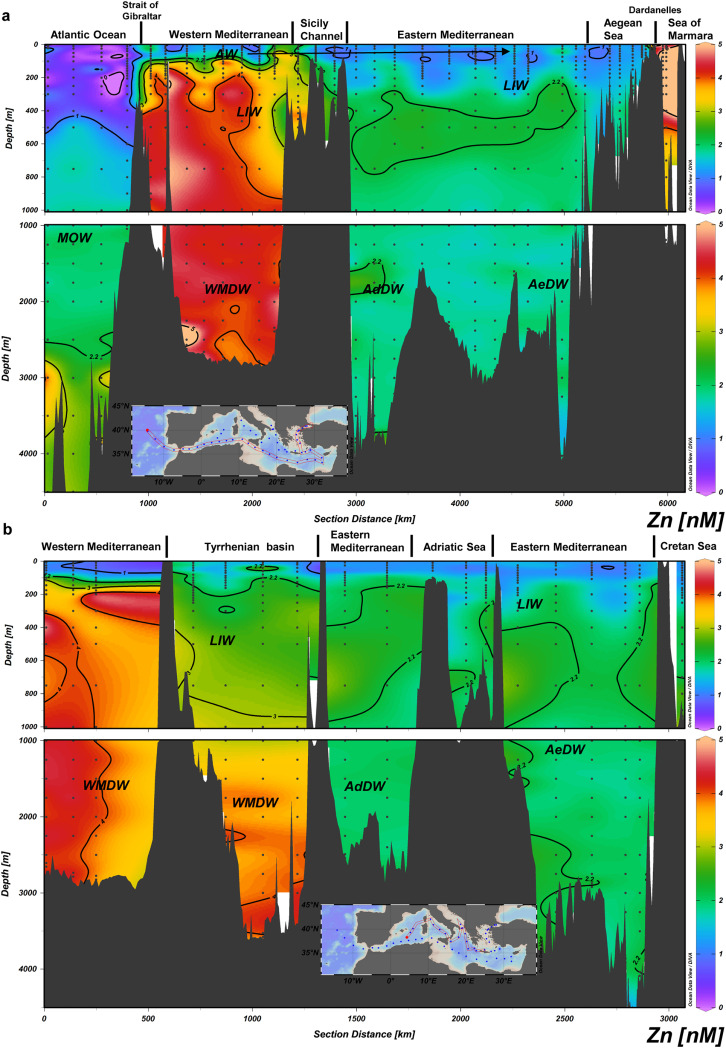Contrasting distributions of dissolved manganese, nickel, cadmium and zinc in the Mediterranean Sea
Extensive trace metal clean sampling during the Dutch GEOTRACES cruise section GA04 allowed Middag and his colleagues (2022, see reference below) to establish the basin scale distribution of the trace metals dissolved manganese (Mn), nickel (Ni), cadmium (Cd) and zinc (Zn). The section is starting in the Mediterranean outflow in the Atlantic Ocean and ending in the sea of Marmara (Figure 1). The data set together with budget calculations shows that:
- the Mediterranean Sea is a net source of these trace metals to the Atlantic Ocean,
- in the surface waters, Ni and Cd concentrations increase from west to east, the Zn distribution is more homogeneous whilst Mn is patchy,
- although atmospheric fallout is likely the main source of trace metals to the Mediterranean basin, Mn traces lithogenic origin while Zn and Cd are mainly sourced from anthropogenic origin and Ni comes from a mixture of both origins and,
- in the deep western basin, an external non-biogenic source is required to explain the high Zn and Cd concentrations observed: dissolution of anthropogenic particles is the favorite hypothesis, originating from atmospheric deposition and/or margin sediment resuspension.


Reference:
Middag, R., Rolison, J. M., George, E., Gerringa, L. J. A., Rijkenberg, M. J. A., & Stirling, C. H. (2022). Basin scale distributions of dissolved manganese, nickel, zinc and cadmium in the Mediterranean Sea. Marine Chemistry, 238, 104063. doi: 10.1016/j.marchem.2021.104063
